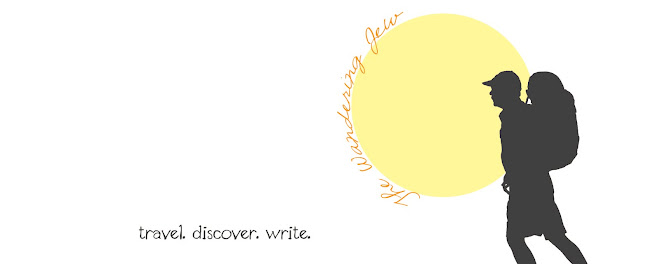 For anyone who has seen the movie District 9, picturing Soweto is going to be easy. Just imagine the same tin shacks, dirt roads and crowded conditions. There's just one difference: instead of aliens, picture people.
For anyone who has seen the movie District 9, picturing Soweto is going to be easy. Just imagine the same tin shacks, dirt roads and crowded conditions. There's just one difference: instead of aliens, picture people.Since I decided to come to South Africa, a trip to Soweto was high on my "must-do" list. Home to an estimated five million people, Soweto - which stands for South Western Townships - is a city in itself, containing the history of a life-changing uprising, the street which has been home to two Nobel Peace Prize winners (Nelson Mandela and Archbishop Desmond Tutu), four different styles of houses, and some of the most amazing people you will ever meet.

Like I've said before, my preconceived idea of the townships were a bunch of tin houses stacked on top of each other, and hard-done-by people in the streets. I pictured a falling down, miserable place.
I'm happy to say that Soweto has proven me wrong.

I'm not saying that life in Soweto is a cake walk. Every day, those people face hardships that I can't even comprehend. Food and water shortages, HIV/AIDS, little government funding and unsanitary conditions are just a few. Still, I was absolutely blown away by the smiles I saw coming from the Sowetan people. The children waved from the streets, the adults invited us into their homes, and the attitude was one of hope.

The tour of Soweto began at the Hector Pieterson Memorial and Museum. This museum is dedicated to the uprising among Sowetan schoolchildren in 1976. The students did not want to learn Afrikaans at school, and formed a protest. It began with marching and singing protest songs, but upon the arrival of the police forces, it erupted. Students threw rocks, and police shot guns. The first casualty was a thirteen-year-old student named Hector Pieterson.

This small museum is laid out in a simple yet poignant way. Photographs and small blurbs about each event leading up to the riots line the walls upwards, until the top floor, which is dedicated to the aftermath. The footage shown around the museum is unbelievable. I had never even heard of the Soweto Uprising before arriving in South Africa, and it was incredible to see documentation of such a powerful event, as well as standing in the very spot where Hector Pieterson had died.

I admire the dignity and pride that the people of Soweto have maintained. From the museum to the streets of the township itself, past the former residence of Mandela to the current residence of Archbishop Tutu, the whole area had a vibrant, forward-moving feel, both through the developed streets, and the poorest of the poor.

Because many of the people in Soweto live in extreme poverty, they felt that they had nothing to lose by inviting us into their homes, and showing us how they lived. I thought about the walled-off homes in the suburbs compared to the openness and sense of community I felt in Soweto.

I liked Soweto better.
Not all of the houses in Soweto are the same. The "bank houses" are two bedroom houses, which people get when they are able to pay the bank for their homes. These houses, while small, and by no means luxurious, don't actually look so bad! The "matchbox houses" and "elephant houses" are smaller, but still have somewhat solid walls, doors and windows. The elephant houses have big, clay roofs, which is where the name comes from.

The slums (the District 9 houses) are a famous visual of Apartheid. These were the houses that we chose to visit. One of the women, accompanied by her three beautiful children, led us into her home with a big smile. The house was tiny - and that is an understatement. The tin roof and tin walls had gaps between them, the bed (only one) was shoved in one corner, a propane stove for heating and cooking was in the centre of the room, and there was a small desk in the other corner. That was it.

I can't believe that people all over the country are living like this. The people of Soweto showed no sign of bitterness or contempt. They seemed genuinely pleased that we were willing to step outside our comfort zone and into theirs to learn about their lifestyle. This really had an impact on me. I'm so glad I had the opportunity - privilege if you will - to get a glimpse of the life in the townships firsthand, and meet some of the amazing, beautiful people that live there.

On the way out of Orlando (in Soweto), we drove by two huge cooling towers, which had been painted with murals and converted into a bungee jump. Mthandeni offered to stop if anyone wanted to give it a go. Maybe next time.

Seeing Soweto, its history and its people was one of the biggest travel highlights of my life. If you are in South Africa, do not, I repeat DO NOT miss Soweto. It was surprising, heartbreaking, and hopeful all at once. Walking into a darker part of a country's lifestyle is essential to understanding another very different aspect of life.
Questions? Comments? Criticisms? I'd love to hear them all!
the-wanderingjew@hotmail.com


No comments:
Post a Comment